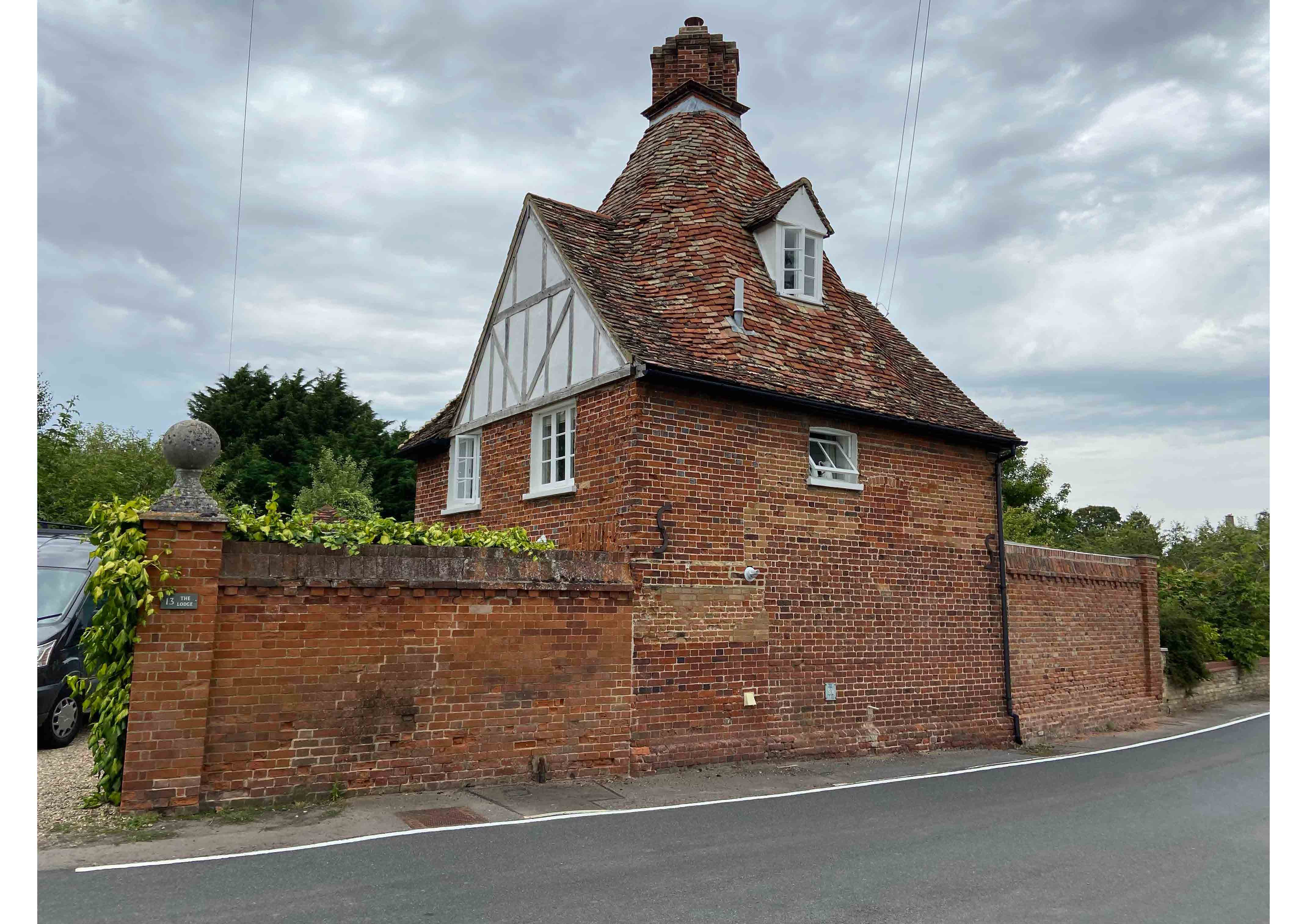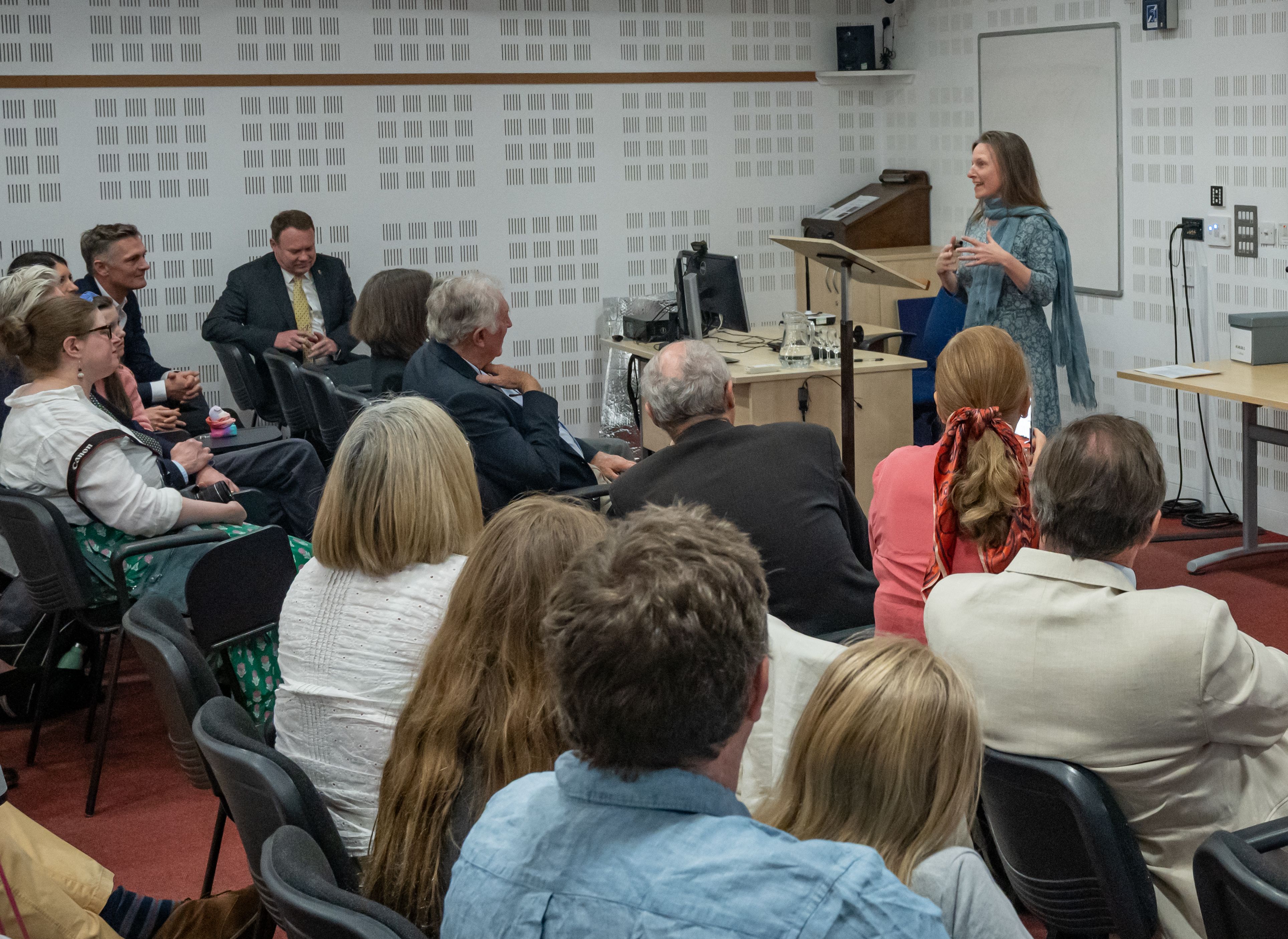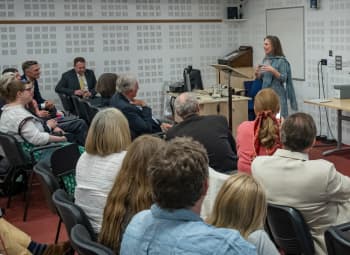Blue Plaque for Louis Leakey who reshaped our understanding of what it means to be human

Louis Leakey, a palaeoanthropologist who studied and taught at Cambridge, has been recognised with a blue plaque at a recent unveiling at the Department of Archaeology, University of Cambridge.
Dr Leakey’s study of early hominid fossils established that the origins and evolution of mankind began in Africa. He also advanced the study of primates and was instrumental in launching the careers of three pioneering female scientists: Jane Goodall, Dian Fossey, and Birutė Galdikas.
The blue plaque will be installed on his former home at 13 High Street, Foxton to recognise a man whose work reshaped our understanding of what it means to be human.
Dr Tamsin O’Connell, Head of Department, Department of Archaeology says: “We are delighted to host the unveiling of this blue plaque that honours Louis Leakey and his monumental impact in establishing the foundations of our understanding of human evolution and the pivotal role of Africa. From his days as an ‘Arch & Anth’ undergraduate here at Cambridge to his world famous excavations at Olduvai Gorge, he was an energetic and innovative thinker, constantly encouraging new ideas and approaches, as well as inspiring succeeding generations across archaeology, palaeontology and primatology.”

Mary and Louis Leakey | Credit: The Smithsonian Institute
Mary and Louis Leakey | Credit: The Smithsonian Institute
Louis Leakey was born in 1903 in what was then British East Africa (modern-day Kenya). His parents were English missionaries, and Louis grew up among the Kikuyu people, with whom he developed close ties that would profoundly shape his worldview. He became fluent in Kikuyu and was later made an honorary member of the Kikuyu tribe, a rare distinction for a European.
It was amidst the dramatic landscapes and rich traditions of East Africa that Leakey’s fascination with the ancient past took root. From a young age, he collected stone tools and fossilised bones, intuitively drawn to the clues they offered about early human life. Leakey’s formal education began in England and he gained a scholarship to St John's College, Cambridge where he studied archaeology and anthropology and then became a Research Fellow. At the unveiling, Prof Graeme Barker, a fellow Johnian, shared anecdotes about Leakey's time at St. John's College, while Prof Marta Mirazón Lahr spoke about his work.
Eager to pursue his interest in human origins, Leakey returned to East Africa in the 1920s to lead a series of expeditions in the Olduvai Gorge and other promising fossil sites. These laid the groundwork for his lifelong commitment to unearthing the story of the evolution of hominids. Louis received his BA in 1926 and PhD in 1930, both from Cambridge University.
The breakthrough in Leakey’s career came in the 1950s and 60s, through sustained excavations at Olduvai Gorge. Working alongside his second wife, Mary Leakey, a distinguished archaeologist in her own right, he helped uncover a treasure trove of fossil remains and stone tools that revolutionised the field of palaeoanthropology.
Among the most significant discoveries were the remains of Homo habilis, a species believed to be one of the earliest members of the genus Homo. The Leakeys' work also contributed to the development of more refined dating techniques and excavation methods, setting new standards for the field.
Louis Leakey had profound respect for the people of Africa and a firm belief that all human beings are equal and had evolved together as a single closely related group. His belief that Africa was the cradle of human evolution, with the discoveries at Olduvai Gorge playing a significant role, formed what later became known as the Out of Africa theory. With the use of genetic sequencing in Cambridge in the 1970s and large-scale genome sequencing of modern human populations and Neanderthal fossil remains in the early 21st century, the Out of Africa theory was scientifically confirmed.
Philip Leakey | Image credit: David Matzliach
Philip Leakey | Image credit: David Matzliach
James Littlewood, Camila Iturra and Dr Tamsin O'Connell | Image credit: David Matzliach
James Littlewood, Camila Iturra and Dr Tamsin O'Connell | Image credit: David Matzliach
Image credit: David Matzliach
Image credit: David Matzliach
Prof Marta Mirazón Lahr | Image credit: David Matzliach
Prof Marta Mirazón Lahr | Image credit: David Matzliach
Dr Tamsin O'Connell, Cllr Peter Fane, Philip Leakey and Cllr Tom Bygott with the blue plaque | Image credit: David Matzliach
Dr Tamsin O'Connell, Cllr Peter Fane, Philip Leakey and Cllr Tom Bygott with the blue plaque | Image credit: David Matzliach
The Cambridge & District Blue Plaque Scheme is run by local charity, Cambridge Past, Present & Future, Cllr Tom Bygott has helped to bring the plaque to fruition, “The plaques recognise people and events that have made a significant impact on our area, the UK, or indeed the world. We are very pleased that the 43rd plaque will be fitting tribute to a man whose insatiable curiosity, rigorous fieldwork, and tireless advocacy transformed our understanding of early human evolution.”
In addition to his fossil discoveries, Louis Leakey made an indelible mark on the study of living primates. Convinced that understanding the behaviour of our closest relatives could shed light on early human societies, he actively encouraged young researchers to observe primates in their natural environments.
Most famously, he was instrumental in launching the careers of three pioneering female scientists Jane Goodall, Dian Fossey, and Birutė Galdikas. Goodall’s groundbreaking work with chimpanzees in Tanzania, Fossey’s studies of gorillas in Rwanda, and Galdikas’ research on orangutans in Borneo each reshaped the field of primatology. Leakey’s foresight and mentorship were crucial in making this possible, as was his ability to secure funding and institutional support for their fieldwork.
Leakey was a passionate advocate for science, conservation, and education. He wrote prolifically, not only for academic journals but also for a wider public audience, believing deeply in the importance of communicating science to society. His many books and lectures helped popularise the idea of human evolution and inspired generations of scientists and enthusiasts alike.
He was also a committed anti-racist and a vocal critic of Eurocentric views of history and culture. By demonstrating that Africa was the birthplace of mankind, he helped to challenge colonial narratives that marginalised African contributions to human history. This perspective was not only scientifically groundbreaking but politically significant during the era of decolonisation.
Leakey received numerous honours during his lifetime, including election as a Fellow of the Royal Society. He founded the Centre for Prehistory and Palaeontology in Nairobi and played a key role in establishing the National Museums of Kenya as leading institutions for scientific research.
Louis Leakey and his first wife Frida, née Avern, lived in the village of Foxton in the early 1930s. Their house was built in 1705 and is of historic interest. It was during his time in Foxton that Leakey continued to write and reflect on the broader implications of his work. The peaceful setting offered respite from the often harsh conditions of fieldwork and provided a base for intellectual exchange with colleagues across the globe.
Cllr Corinne Garvie, who represents South Cambridgeshire District Council on the Blue Plaque Committee, said: “Recognising buildings like the former home of Louis Leakey in Foxton helps preserve the stories that shaped our community. Leakey's groundbreaking work in tracing human evolution and our origins as a species by studying the fossil record began right here, and it's vital we celebrate and remember the local roots of such global figures. Blue Plaques help us connect with our past, inspire future generations, and honour the incredible people who once called our villages home.”
Published 16 May 2025
The text in this work is licensed under a Creative Commons Attribution 4.0 International License
Images: David Matzliach and the Smithsonian Institute









